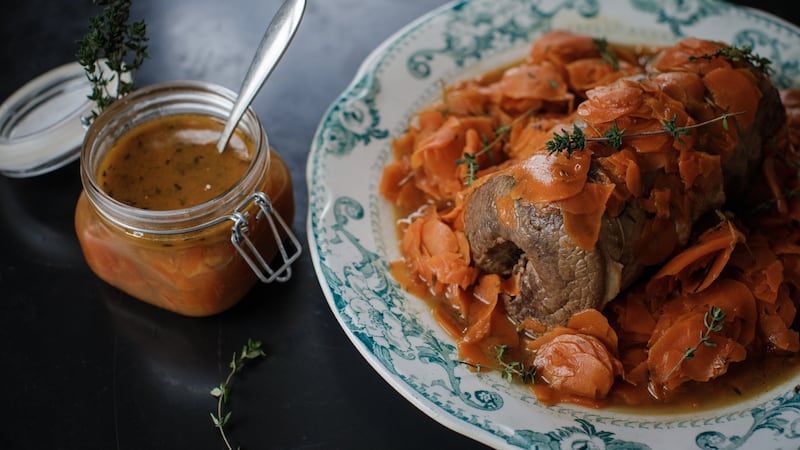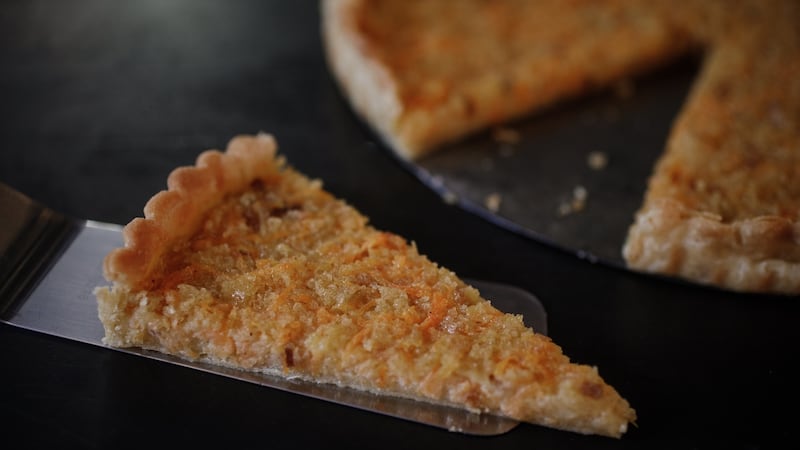Let’s talk about our roots. Carrots, parsnips and turnips are our old reliables, they’ve always been there on stand by and are nearly always available. We take them for granted and they get picked up when we can’t think of anything else and are consequently neglected when something more exciting comes along.
These were the root vegetables of my childhood, a staple in our diets with lashings of butter and white pepper. In France, where the parsnip originated, the only time you will see it today for sale is wrapped in a tray with other roots as a flavouring for pot-au-feu.
We all know the health benefits of carrots, but I never recall anyone mentioning the benefits of parsnips and turnips. We are drawn to parsnips due to their sweetness, but turnip has been a challenge for many, mainly due to it being usually overcooked and lacking in seasoning. Parsnips are now traditionally part of our roast dinner and make very nice crisps and chips, but they are also used in herbal medicine as they are a great source of calcium and magnesium. Next time you feel like a juice, give parsnip a try with a pear and you are in for a real health and flavour kick.
But really, it's the forgotten turnip that needs more attention. Firstly, it's known by two names, which causes great confusion. The name swede is an abbreviation for Swedish turnip. In Ireland, swedes are traditionally referred to as turnip (neeps in Scotland). Swede is large and yellow-orange whereas turnip is small and white. They were first used as winter fodder for cattle (just as parsnips are fed to the pigs that produce the best Parma ham in Italy) and only began to be consumed by man during times of hunger. They grow very well in cold and damp climates and yes, they started life in Sweden and then became popular in other cold climates.
They are very easy to grow and they grow only partially underground, which creates a dramatic picture in the garden. They are members of the brassica family so the leaves are delicious to eat. While the root has a peppery, bitter tang, their tops can be spicy and mustard-like. You’re getting two vegetables in one.
Furthermore, they are a really valuable source of nutrients: vitamin C, potassium, calcium, iron and omegas. I have included them in the spicy root vegetable recipe below but they have many other uses. They can be eaten raw along with carrots and parsnips in a salad, and I have often had it on my menu with a dressing of ginger, lemon and honey or roasted with freshly grated ginger to go with beef.
Is there any chance they might become the new kale?
Spicy root vegetables
This dish is pure medicine and a delightful way to eat these winter root vegetables. You can play around with the quantities depending what is available to you. If you are not a sweet potato fan, use regular potatoes, but use a variety that will hold their shape. Celeriac and butternut squash would be good replacements and if you are lucky enough to find Jerusalem artichokes they would be amazing, as they work so well with spices. These vegetables with a bowl of rice make a perfect midweek meal but would also work well with any meat.
Ingredients
(Serves 6)
3 medium parsnips
3 medium carrots
1 medium turnip
1 medium sweet potato
5 tbsp olive oil
½ tsp turmeric
2 tsp caraway seeds
Salt and pepper
A pinch of chilli powder to your taste
½ lemon, juiced
Fresh ginger, grated to your taste
1 tsp honey
Method
Peel and dice all the vegetables and put in the pan with the rest of the ingredients.
Half cover with water, bring to a slow boil and cook on a low heat with the lid on for about 20 minutes, or until the vegetables are done, turning them over so that they are all in the water for some time (They will cook in the steam). If you are eating them straight away, take them off the heat before they are fully cooked through as they will continue to cook in the heat of the saucepan.
Transfer the vegetables to a bowl and cover with a plate while you reduce the liquid until you are happy with the taste. Pour over the liquid, mixing in the spices amongst the vegetables as you go.

Beef and carrots
The first time I saw this dish being made in France I was a little suspicious. Do French people really make dishes this simple? Yes, they’re experts in the knowledge that four ingredients and good seasoning is all it takes.
It instantly became a favourite of mine and years later I shared it with Jane Grigson who included it in her revised edition of English Food. This dish can be made anywhere as all the ingredients are common. I find I am inclined to add extra carrots as I like to have leftover sauce to go with whatever carb takes my fancy for a quick supper later in the week. Any dish that tastes this good must be shared.
You can substitute topside beef here if you wish – just give it a little less cooking. For even better flavour, cook a day in advance and reheat. If it’s more convenient for you, this dish can be cooked in a low oven once it’s been brought to the boil.
Ingredients
(Serves 6)
2-2.5kg piece rolled brisket
6-8 large carrots, peeled
Up to 1 litre poultry stock, unsalted
3 sprigs of thyme
Salt and pepper
Parsley to garnish
Method
Choose a flameproof pot that holds the meat closely.
Brown the beef all over in a little oil and put it into the pot.
Slice the carrots thinly, using a food processor or mandolin, and arrange a quarter of them around the beef. Pour in stock to 5-7cm up the pot and tuck in the thyme. Bring to the boil and cover. The lid need not fit very tightly, as a certain amount of evaporation is desirable.
Turn the heat down to a gentle bubble, checking it every half hour, adding the rest of the carrots in three batches and topping up the liquid level with more stock. It will need at least 1½ hours and maybe a half an hour extra depending on the thickness of the joint.
5. Transfer the beef to a hot serving dish. Keeping the liquid, strain the carrots, which will be extremely succulent, and place them around the beef. Season them with some black pepper and sprinkle with parsley and keep warm. Put the strained liquid into a shallow pan and boil down to concentrate the flavour. Season, pour a little over the beef and carrots, and the rest into a hot jug. Boiled potatoes and a green salad with a mustard dressing would go well here.

Hannah Glasse’s carrot tart
We are so used to the notion of carrots in cake but this tart is something special due to the addition of orange flower water and brandy. It takes a little more effort as one has to make pastry, but it’s worth it.
Ingredients
For the sweet shortcrust pastry:
120g flour
2tbsp sugar
60g butter
1 medium egg
For the filling:
150g finely grated carrot
100g breadcrumbs
3 egg yolks
2 egg white
200ml cream
3 oz melted but cool butter
2 generous tbsp brandy
2 tbsp orange flower water
3-4 tbsp sugar
¼ nutmeg, grated
Method
Make the pastry by mixing the flour and sugar together and working in the butter until it resembles fine breadcrumbs, and bring together with the beaten egg. Let it rest for 20 minutes. Heat your oven to 190 degrees. Take a 22cm tart tin with a removable base and line it with the shortcrust. Prick the pastry all over with a fork, then take a pastry brush and dip it into the beaten eggs (for the filling) and brush the pastry lightly with it. Bake the case for 15 to 20 minutes or until lightly golden.
Mix the filling ingredients together, adding the sugar and nutmeg to taste. You will be surprised how much nutmeg you will use here.
Bake at 180 degrees until the filling has set.
Let the tart sit for 15 minutes before serving.









